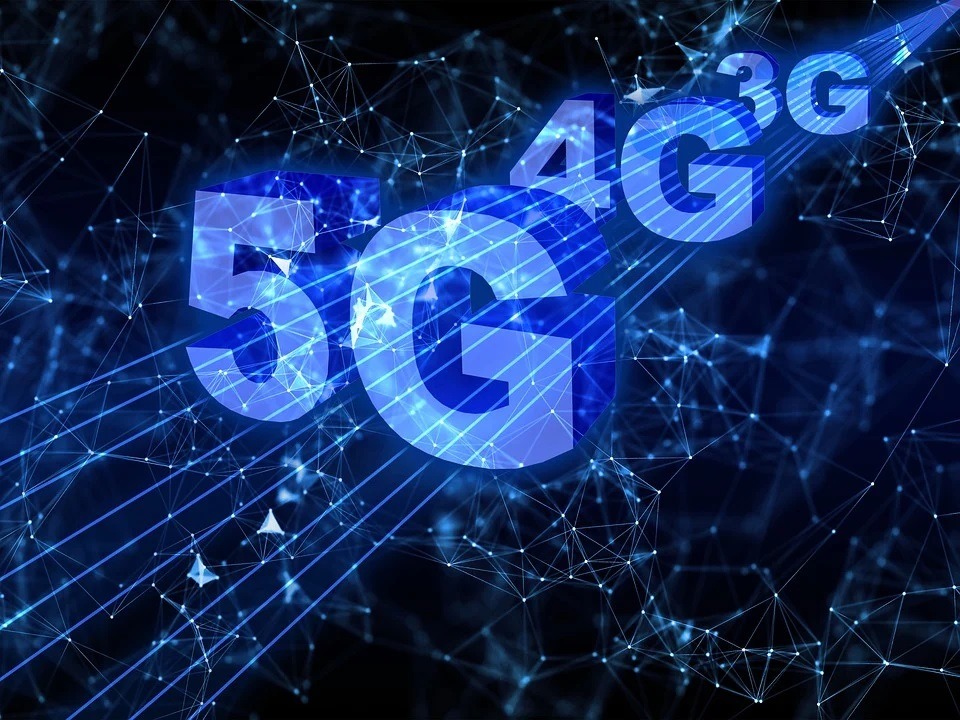In telecommunications, 5G is the fifth-generation technology standard for broadband cellular networks. The cell phone companies began to implement around the world in 2019. It is intended success to the 4G networks that provide connectivity to the majority of the cell phones. According to the GSM Association, it is expected that 5G networks will have more than 1.7 billion subscribers worldwide by 2025.
Just like 2G, 3G, and 4G, 5G networks will be divided into small geographic areas called cells for the service area. All the 5G wireless devices in a cell will be connected to the Internet and telephone network by radio waves. It will be transmitted through a local antenna in the cell.
The main advantage of new networks is that they have higher bandwidth. As a result, the users will get higher download speeds such as up to 10 gigabits per second (Gbit/s).
An Introduction to 5G
5G a fifth-generation mobile network is a new global wireless standard after 1G, 2G, 3G, and 4G networks. The 5G will enable a new kind of network that will connect virtually everyone and everything such as devices, objects, and machines.
5G wireless technology is intended to deliver higher and maximum data rates of several Gbps, more reliability, ultra-low latency, higher availability, massive network capacity, and a more consistent user experience for more users. Efficiency and increased performance empowerment will be provided by the new user experience and connect new industries.
Who Invented 5G?
The invention of 5G is not owned by any person or company. Although multiple companies within the mobile ecosystem are helping to bring the 5G to life. For this purpose, Qualcomm has played an important role in inventing the many foundation technologies that makeup 5G and drive the industry. 5G is the upcoming wireless standard.
We are at the heart of the Third Generation Partnership Project (3GPP). It is an industry organization defining the global specifications of 3G UMTS, including HSPA such as 4G LTE and 5G technologies.
3GPP is the source of many essential inventions in all aspects of 5G design, such as from the air interface to the service layer.
Previous Generations of Mobile Networks and 5G
The previous generations of mobile networks are 1G, 2G, 3G, and 4G networks:
- First Generation – 1G: It was launched during the 1980s. It was used for delivering analog voice.
- Second Generation – 2G: It was launched in the early 1990s by introducing digital voice such as Code Division Multiple Access (CDMA)
- Third Generation – 3G: It was launched in the early 2000s. It introduced mobile data such as CDMA2000
- Fourth Generation – 4G: It was launched in the 2010s. It was brought as 4G or 4G LTE for the mobile networks. It ushered in the mobile broadband era.
All these generations led to the design of 5G to provide a better connective than before. 5G will be having high speeds, negligible latency, and superior reliability even than 4G LTE.
How Will 5G Affect You?
5G is designed for a variety of things out of which transforming lives are at the top. It will give you faster download speeds, more capacity, lower latency, and connectivity for billions of devices. Especially in domains of artificial intelligence (AI), Virtual Reality (VR), and the Internet of Things (IoT).
For example, while using the 5G network, you will be having access to improved and new experiences such as multiplayer cloud games, real-time video translation, and collaboration, near-instant access to cloud services, augmented reality shopping, etc.
Where Is 5G Being Used?
5G is used in three main types of connected services. These include mission-critical communications, mobile broadband, and mass IoT. 5G is defined to have a capability of forwarding computability. It is an ability that will flexibly support future services that are currently unknown.
Mission-Critical Communications
5G will enable new services that will transform the industries with ultra-reliable, low latency, availability, etc. links for remote control vehicles, critical infrastructure, and medical procedures.
Improved Mobile Broadband
In addition, 5G network will improve smartphones. 5G mobile networks will usher in new immersive experiences such as augmented reality and virtual reality. Also, the cost per bit will be lower with smoother and faster data speeds.
Massive IoT
The invention of 5G is meant to connect a multitude of integrated sensors to virtually anything. It will be able to reduce the mobility, power, data rates and provide extreme low- and tight-cost connectivity solutions.
How Will Consumers Use 5G?
The average user is expected to use almost 11GB of data per month on their smartphones by 2022. This is due to explosive growth in video traffic as cell phones are increasingly becoming the source of entertainment and media. Also, smartphones are the massive growth of always-connected devices for computing experiments and cloud experience.
With the advent of 4G, information consumption has completely changed. Over the past decade, there have been leaps and bounds in the mobile app industry. Also, around the services such as ridesharing, video streaming, and much more. The mobile ecosystem to new industries will be expanded by 5G usage.
5G will contribute to cutting-edge user experiences such as built-in IoT capabilities, Unlimited Extreme Reality (XR), new business applications, instant cloud access, local interactive content, and a few more.
How Will Businesses Use 5G?
With superior network reliability and data speeds, 5G will make a huge impact on businesses. The benefits of 5G will improve the efficiency of business while giving the users faster access to more information.
Depending on the industry, some businesses may take full advantage of 5G capabilities. The businesses that will require high speed and network capacity with low latency will be covered by the use of a 5G network. For example, the small factories will be able to run Industrial Ethernet using 5G to increase accuracy and operational productivity.
How Do The Cities Will Use 5G?
5G can be used in smart cities in a variety of ways to transforms the lives of people who live there. Primarily, 5G will provide greater efficiency by increasing the connectivity between people and things. The higher speeds and lower latency will be used for automotive safety, entertainment, infrastructure, and VR.
Is 5G Available Now?
Yes, 5G is here today and global carriers have started rolling out new 5G networks in early 2019. The major phone-making companies are marketing their 5G phones to the public. As a result, more people will be having access to the 5G network.
5G has been deployed in more than 60 countries and it continues. You can see much faster implementation and adoption of 5G as compared to 4G. Consumers are excited about the higher speeds, low latency, and less distortion.
5G Network – New Generation of Internet Connection
5G goes beyond the capacity of mission-critical services, massive IoT, and improved mobile broadband. It is difficult to predict when everyone will be having access to 5G like 4G or 4G LTE. But there has been a huge momentum in 5G launches in the first year. It is expected that will increase the use of 5G network in the coming years.
For 5G network, it has advantages but on the other hand, there are some disadvantages too. To use 5G on your smartphone, you must buy a 5G enabled or compatible smartphone because it will not work on the previous smartphones with a maximum mobile network capacity of 4G. In the upcoming years, 5G will be available worldwide and it will be one of the mainstream technologies.

